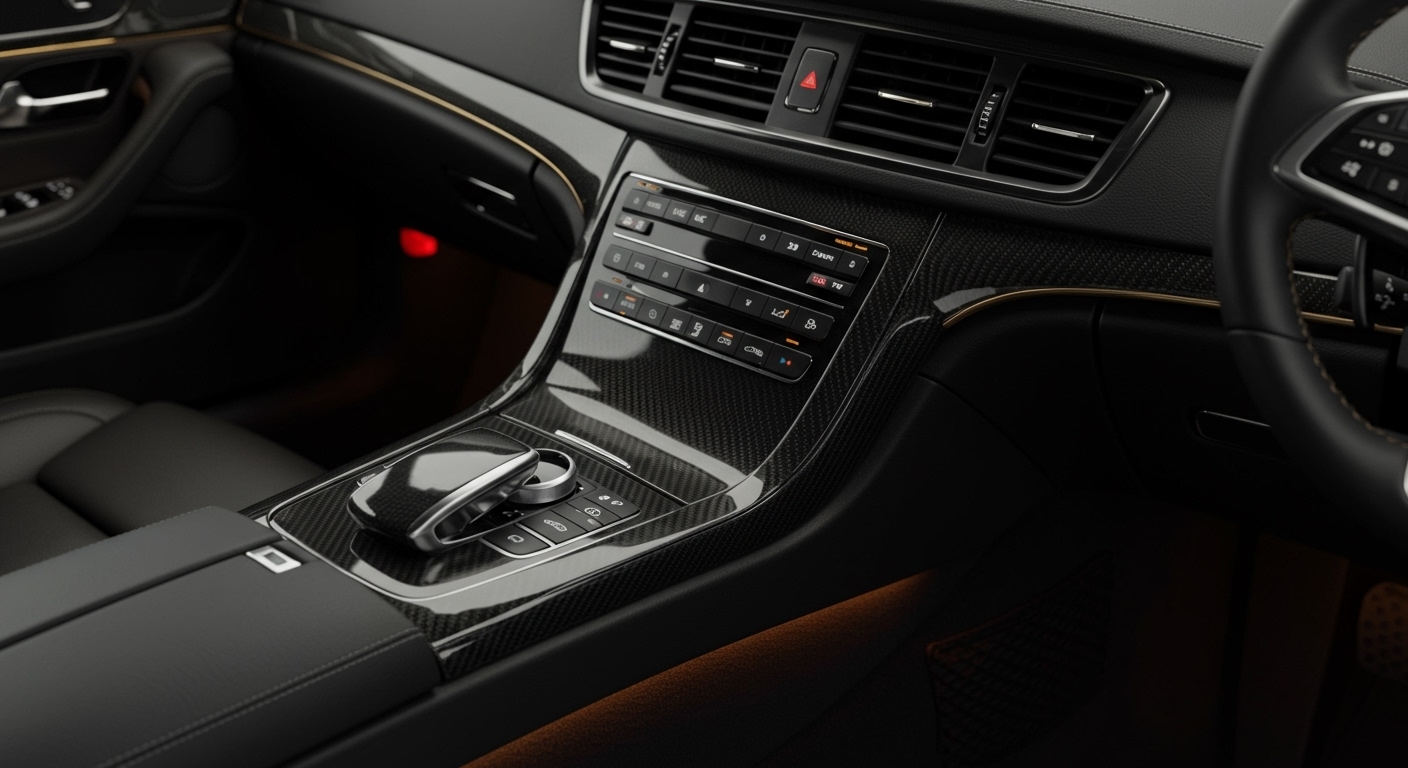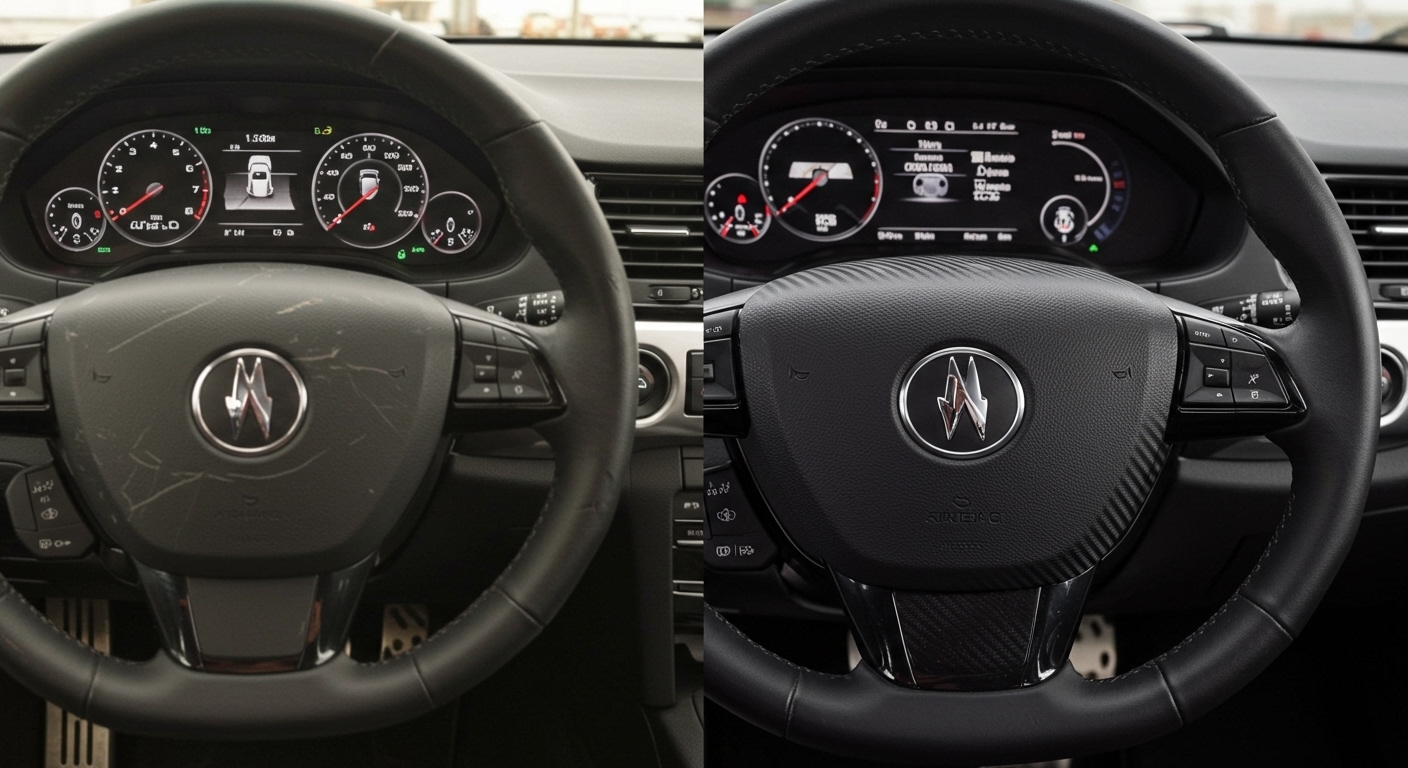Interior car wrapping has become one of the biggest customisation trends across the UK. Car lovers now use vinyl wraps to refresh their vehicles without permanent changes. According to Statista (2024), the UK automotive customisation market is worth over £1.5 billion. This growth includes both DIY and professional wrapping projects that are increasing every year. Many car enthusiasts enjoy how easy it is to give their interiors a brand-new look. Interior wrapping offers a simple and affordable way to change the car’s appearance inside. It is also a cleaner and faster option than replacing parts completely.
People now see wrapping as a smart, low-cost design solution. It gives a modern, custom finish while keeping the car’s original materials safe. For UK car owners, it’s also a fun, creative project that can be done at home. Whether it’s a dashboard, centre console, or door trim, wrapping makes it all look fresh again.

Why Wrap Your Car’s Interior?
There are many reasons to wrap the interior of a car. The main one is to improve both style and protection. Wrapping adds colour and texture, while also keeping surfaces safe from scratches. It can also help stop fading caused by sunlight or frequent contact. Many people use vinyl wrap interiors to protect dashboards, trims, and consoles from daily wear.
Using wrap for interior design means you can update your car without replacing parts. It also helps the environment since less plastic waste is created from replacements. The wraps can be removed anytime, giving flexibility in restyling. Interior wraps are perfect for those who like change but prefer affordable updates.
When used correctly, vinyl can transform the whole cabin in hours. It also adds a soft touch and a premium look. This makes it ideal for personal or professional car customisation projects. The practical benefits of interior wrapping make it one of the top choices among UK drivers today.
Best Vinyl for Interiors: Carbon Fiber & Textured Wraps
Choosing the right material is important when wrapping your car’s interior. The most popular choices are carbon fiber wrap on car interiors and textured vinyl wrap finishes. These provide a modern appearance and durable protection. In the UK, carbon-style wraps have grown rapidly in popularity. Their realistic texture gives a sporty and elegant touch that feels premium.
The structure vinyl wrap collection is a great example of this trend. It has wraps that resemble real carbon fibre textures. They also come in matte or gloss finish to suit various design themes. For deeper and more visual detail, one may get any of the following:
- Matte Forged Carbon RCF08M for a subtle and refined texture
- Dark Forged Carbon RCF09-HD for deeper tones and contrast
- Gloss Dark Forged Carbon RCF09 for high-shine luxury appeal
These wraps create different moods inside the car, from sporty to elegant. Their textures give depth to trims, handles, and consoles without needing replacement parts. Anyone interested in exploring more finishes can visit the main vinyl wraps page. There, a full range of wrapping films can be found for all interior needs.
Step-by-Step: Wrapping a Centre Console
Many car owners start with the centre console when trying vinyl wraps for the first time. It is a central space that instantly transforms the appearance of the interior. The following is a simple and worry-free procedure on how to wrap up the console properly:
- Preparation: Clean the surface using a mild cleaner to remove any dust or oils.
- Measuring and Cutting: Measure the wrap slightly larger than needed to allow stretching.
- Application: Use a heat gun and squeegee to mould your vinyl around curves and corners.
- Trimming and Finishing: Cut off the excess vinyl to make it smooth and a factory-like finish.
These are basic tips that can enable beginners to achieve clean and professional results. For more detailed help, users can refer to the vinyl wrap installation guide for pro tips. Following this process ensures the wrap looks neat and lasts longer inside the car.
Handling Complex Shapes and Vents
Wrapping curved and detailed areas inside a car can be tricky. Air vents, handles, and curved trims often require extra care. The best method is to use flexible, high-conformity vinyl films. These wraps stretch smoothly with heat without losing their texture or shape.
UK installers use techniques like post-heating to make wraps last longer. This process removes any hidden tension in the vinyl. It helps prevent peeling or bubbles over time. Proper application ensures the wrap stays firm and clean even in changing weather.
Many professional wrappers recommend using materials from the structure vinyl wrap collection again for these complex shapes. These wraps are specially designed for precision contouring. They allow perfect fitting around corners, vents, and consoles. With practice, anyone can wrap difficult surfaces at home with great results.

Interior Wrapping vs. Hydro Dipping
Both interior wrapping and hydro dipping car interior techniques are popular in the UK. However, they are different in process and purpose. Vinyl for wraps gives a reversible option. It is easily removable or replaceable without damaging the surface. Conversely, hydro dipping entails the printing of designs directly onto the part. This process makes it permanent but allows complex patterns.
Vinyl wrapping offers many advantages over hydro dipping. It is quicker, cleaner, and more affordable for most users. It also provides endless finish options, from matte to gloss and textured. Hydro dipping allows more intricate printed effects but requires more time and setup.
According to recent UK auto restyling reports (2024), wrapping is still the top choice. It offers cost savings and flexibility that hydro dipping cannot match. For more creative comparisons and ideas, readers can refer to the Hydro Dipping guide. Both methods are artistic, but vinyl remains the easier and most practical choice for car interiors.
Conclusion
Interior vinyl wrapping is changing how people style their cars in the UK. It provides a way to refresh interiors without large costs or permanent work. Wrapping gives style, protection, and flexibility in one easy solution. Car owners can choose from carbon fibre, matte, or textured finishes to suit their taste. With so many textures and colours, each car can look unique. The popularity of interior wrapping continues to rise because it blends design freedom with practicality.
This simple method also supports sustainability by reducing waste and the reuse of parts. For car enthusiasts and daily drivers alike, wrapping makes interiors look new again. Whether done professionally or at home, the process is rewarding and cost-effective.
Explore different textures, finishes, and wrapping methods that match your car’s personality. Check various materials like carbon fibre or matte textures to suit your driving lifestyle. Try small parts first, such as trims or panels, before wrapping the entire cabin. Learn installation techniques and find the wrap for interior style that fits your needs best.
